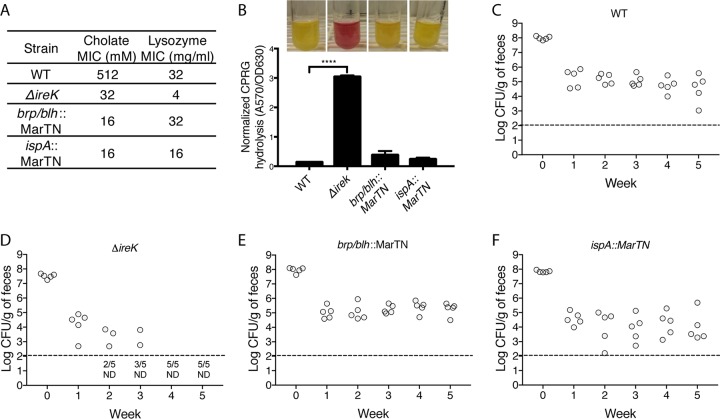FIG 1.
Loss of cholate resistance alone does not cause the ΔireK colonization defect. (A) Cholate resistance was determined for wild-type (WT) E. faecalis (OG1RF) and cholate-sensitive mutant ΔireK (CK119), as well as the brp/blh (23J13) and ispA (28M17) transposon mutants. The MICs reported represent the median values from three independent biological replicates. (B) CPRG hydrolysis was measured for the strains listed in panel A. CPRG hydrolysis in cultures (representative cultures shown directly above bar for each indicated strain) was quantified by measuring the absorbance at 570 nm after the removal of bacteria by centrifugation and normalization to the absorbance at 630 nm. The reported measurements represent averages from three independent cultures, and error bars represent standard deviations. Statistical significance was evaluated by t test. ****, P < 0.0001 versus WT. (C to F) Groups of mice (5 per group) were colonized with the strains indicated in panels A and B. Bacterial loads were determined by enumerating the enterococci in feces by culture on rifampin-supplemented BHI agar. Dashed lines, the limit of detection. Symbols for mice with undetectable colonization levels were omitted, and instead, the number of mice for which colonization was not detected (ND)/total number of mice tested is shown underneath the dashed lines.

